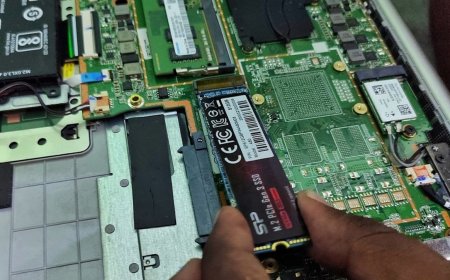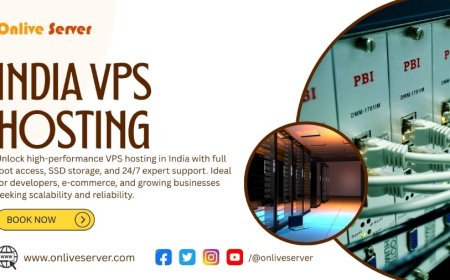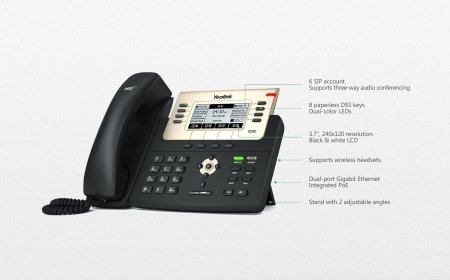Optimizing Soldering with Reflow Machines in Modern PCBA Manufacturing
Explore how a reflow machine enhances PCBA production with precision, consistency, and efficiency for modern electronics manufacturing.

In the fast-evolving electronics industry, precision, reliability, and scalability are crucial. As the demand for compact and high-performance devices grows, surface mount technology (SMT) has become the foundation of printed circuit board assembly (PCBA). At the heart of SMT lies a critical processsoldering, which is where a reflow machine plays a vital role.
A reflow machine is essential in ensuring secure, clean, and consistent solder joints on surface-mounted components. At Sumitron, we offer advanced reflow solutions designed to improve throughput, reduce defects, and enhance quality in PCBA production.
This article will walk you through the role, working, benefits, and selection criteria for reflow machines, especially for industries looking to enhance automated soldering processes.
What Is a Reflow Machine?
A reflow machine, often referred to as a reflow oven, is a specialized piece of equipment used in SMT processes to solder components onto printed circuit boards. It does this by gradually heating the board until the solder paste reflows (melts), creating a permanent bond between the components and PCB pads.
Unlike manual soldering, which is time-consuming and inconsistent, reflow soldering is precise, scalable, and ideal for high-volume manufacturing.
How Does a Reflow Machine Work?
A reflow machine operates through several temperature-controlled zones that the PCB passes through on a conveyor system. The process generally involves four main stages:
-
Preheat Zone: Gradually heats the PCB to prevent thermal shock and evaporate volatile solvents.
-
Soak Zone: Stabilizes the temperature and activates flux in the solder paste, which cleans the surfaces.
-
Reflow Zone: Peaks the temperature above the solder paste's melting point, forming solder joints.
-
Cooling Zone: Cools the board to solidify the solder joints without causing thermal stress.
Modern reflow machines can be convection-based or infrared and come with programmable temperature profiles to suit different board types and solder pastes.
Why Is a Reflow Machine Important in SMT?
The use of a reflow machine is indispensable in todays electronics assembly for several reasons:
-
Precision: Uniform heating profiles ensure consistent soldering without damaging components.
-
Automation: Compatible with fully automated SMT lines, reducing manual intervention.
-
Speed: Efficiently handles high-volume production without sacrificing quality.
-
Quality Assurance: Minimizes defects such as cold solder joints, bridging, and tombstoning.
-
Traceability: Advanced models offer data logging and process control to maintain production standards.
For OEMs and EMS providers, investing in a reliable reflow machine is key to maintaining competitive advantage in terms of both product quality and production efficiency.
Types of Reflow Machines
-
Infrared (IR) Reflow Machine:
Utilizes infrared radiation for heating. It's energy-efficient but may lead to uneven heating on densely populated boards. -
Convection Reflow Machine:
Uses hot air to heat the entire PCB evenly. This is the most common and reliable type used in industrial PCBA setups. -
Vapor Phase Reflow Machine:
Heats the board using a controlled vapor environment. Ideal for boards with complex thermal requirements. -
Nitrogen Reflow Machine:
Incorporates nitrogen to reduce oxidation, ideal for high-reliability soldering in aerospace, medical, and automotive electronics.
Sumitron supplies multiple reflow soldering systems tailored for varying complexity and production needs.
Key Features to Look for in a Reflow Machine
When choosing a reflow machine, consider the following features:
-
Temperature Zones: More zones allow precise control over heating profiles.
-
Profile Customization: Ability to adjust temperature and conveyor speed for different PCBs.
-
Heating Technology: Choose between convection, infrared, or hybrid models based on your board complexity.
-
Board Size Compatibility: Ensure the machine supports your PCB dimensions and components.
-
Cooling Efficiency: Proper cooling prevents warping and ensures joint strength.
-
Process Monitoring: Built-in diagnostics, alarms, and data logging help with quality assurance.
At Sumitron, we help manufacturers select the right reflow machine based on their product line, throughput goals, and technical requirements.
Industries That Benefit from Reflow Machines
-
Consumer Electronics: For phones, laptops, and smart devices, reflow soldering ensures high-speed and high-accuracy assembly.
-
Automotive: With stringent reliability standards, automotive PCBs require flawless solder joints.
-
Aerospace: Critical systems require soldering under tightly controlled environments, making precision equipment essential.
-
Medical Devices: Compact, sensitive electronics benefit from low-defect reflow soldering.
-
Industrial Equipment: Complex circuit boards need consistent results, which reflow machines offer reliably.
Common Challenges in Reflow Soldering and How to Solve Them
Even with advanced equipment, challenges may arise. Here are some and how to address them:
-
Solder Balling: Often due to too rapid heating. Use a profile with a smoother ramp rate.
-
Tombstoning: Can result from uneven heating. Ensure proper stencil design and reflow symmetry.
-
Voiding in Joints: Caused by trapped gases. Use low-void solder pastes and adjust preheat time.
-
Component Cracking: Results from thermal stress. Ensure optimal cooling rate post reflow.
Partnering with a knowledgeable supplier like Sumitron helps in configuring the reflow machine for optimal results.
Why Choose Sumitron for Reflow Machines?
Sumitron is a trusted distributor of world-class PCBA manufacturing solutions. When it comes to reflow machines, we offer:
-
Leading global brands with proven performance
-
Technical consultation for equipment setup and integration
-
After-sales support and training
-
Spare parts and maintenance services
Our solutions are tailored for startups, mid-size EMS providers, and large OEMs across India.
Conclusion
A reflow machine is a critical component in any automated soldering line for PCB assemblies. It offers unmatched precision, reliability, and scalabilityqualities essential in todays electronics manufacturing.
By choosing the right machine and optimizing your soldering process, you can significantly enhance your product quality and throughput. With its broad selection of high-performance soldering systems, Sumitron continues to empower industries with technology-driven manufacturing excellence.


































